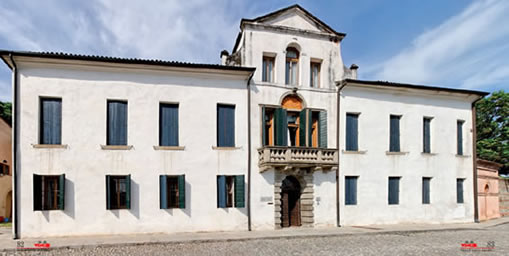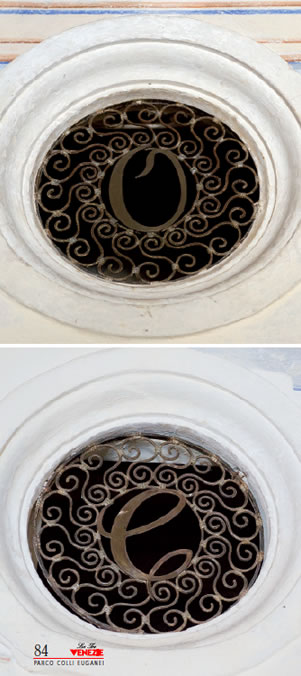RICCARDO GHIDOTTIStorico
MonseliceCA' EMOUna villa veneta al servizio del parco
|
|
Ca' Emo così come era raffigurata nella bella xilografia tratta da "Le Cento Città d'Italia" datata 1895, si presenta oggi ancora intatta come fu voluta tra la fine del 1500 e gli inizi del 1600. La stessa xilografia rappresenta una veduta d'insieme dell'aspetto archittettonico del fabbricato e delle pertinenze pervenutoci ad oggi e frutto di trasformazioni succedutesi nel tempo, anche in considerazione dei numerosi passaggi di proprietà e di destinazione d'uso. La stratificazione avvenuta è, in certo qual modo, documentata iconograficamente sia nell'incisione del De Angeli come nella settecentesca incisione di Vincenzo Coronelli. Entrambi raffigurano il complesso inserito in una più ampia veduta della città nel versante sud della Rocca. Il Bortoli nel suo "Catastico di San Francesco", datato 1741, descrive l'edificio con una prospettiva curiosa ed insolita. Fino al 1830, Ca' Emo sembrava in cima ad un piccolo colle naturale, dando così più eleganza e prospettiva alla facciata. Infatti sorgeva sulla motta che in quell'anno è stata modificata con il terrapieno ancora oggi visibile.
Ca' Emo, as it was represented in the beautiful "The Hundred Italian Cities" xylograph dated 1895, still reflects the planning of who designed it between 1500 and 1600. The same xylograph shows an overall view of the architectural aspects of the building and of its annexes which are still there today, as a result of a series of transformations due to many different owners and destinations of use. All these changes were somehow recorded in the engraving by De Angeli and in the eighteenth-century one by Vincenzo Coronelli. They portray the building complex in a broader view of the town on the southern side of the Fortress. In his "Catastico di San Francesco" of 1741, Bortoli describes the building from a curious and unusual point of view. Until 1830, Ca' Emo seemed to be located at the top of a small natural hill, giving elegance and perspective to its façade. Actually, it stood on a hill that transformed that year into an embankment which is still there. This intervention modified the uphill access route and the road network in its upper part. As a result, the façade of the Villa now directly overlooks the paved street of Via San Martino. In the seventeenth century, the Villa was owned by Marin Faliero of Venice, while at the beginning of the following century it was the property of the aristocrat Andrea Bon. In the first twenty years of the eighteenth century it was bought by Zuane Emo, who in 1740 sold it to the noble Codognola family. During these centuries the splendid mansion, with its terrace gardens facing the Duomo of Santa Giustina, was used as a home. In 1823 Girolamo Codognola sold the mansion to Antonio Zanellato. In 1836 it was bought at a public auction by Giacomo Marigo of Monselice, who in turns sold it to the Municipality of Monselice in 1866, and became a public hospital. In 1923 a new hospital was built in Ara della Decima of Vallesella and Ca' Emo became an old people's home, until 1935, when it was handed over to a technical/commercial school and later became the detached department of the "Liceo Ferrari" a high school of Este, open until about the beginning of the '70s. Even though some rooms were temporarily used by some local organizations, a period of slow desertion and neglect started then for Ca' Emo.
|
|
CONTEMPLAZIONE E PACE >>>>>
Potete ordinare la vostra copia del "Parco dei colli euganei" online oppure lo trovate in edicola e potrete godervi le immagini ad alta risoluzione. Contattateci per eventuali richieste.
 |
Le Tre Venezie Editoriale Via Zermanese 161, 31100 Treviso, tel e fax: +39 0422 404807 |



